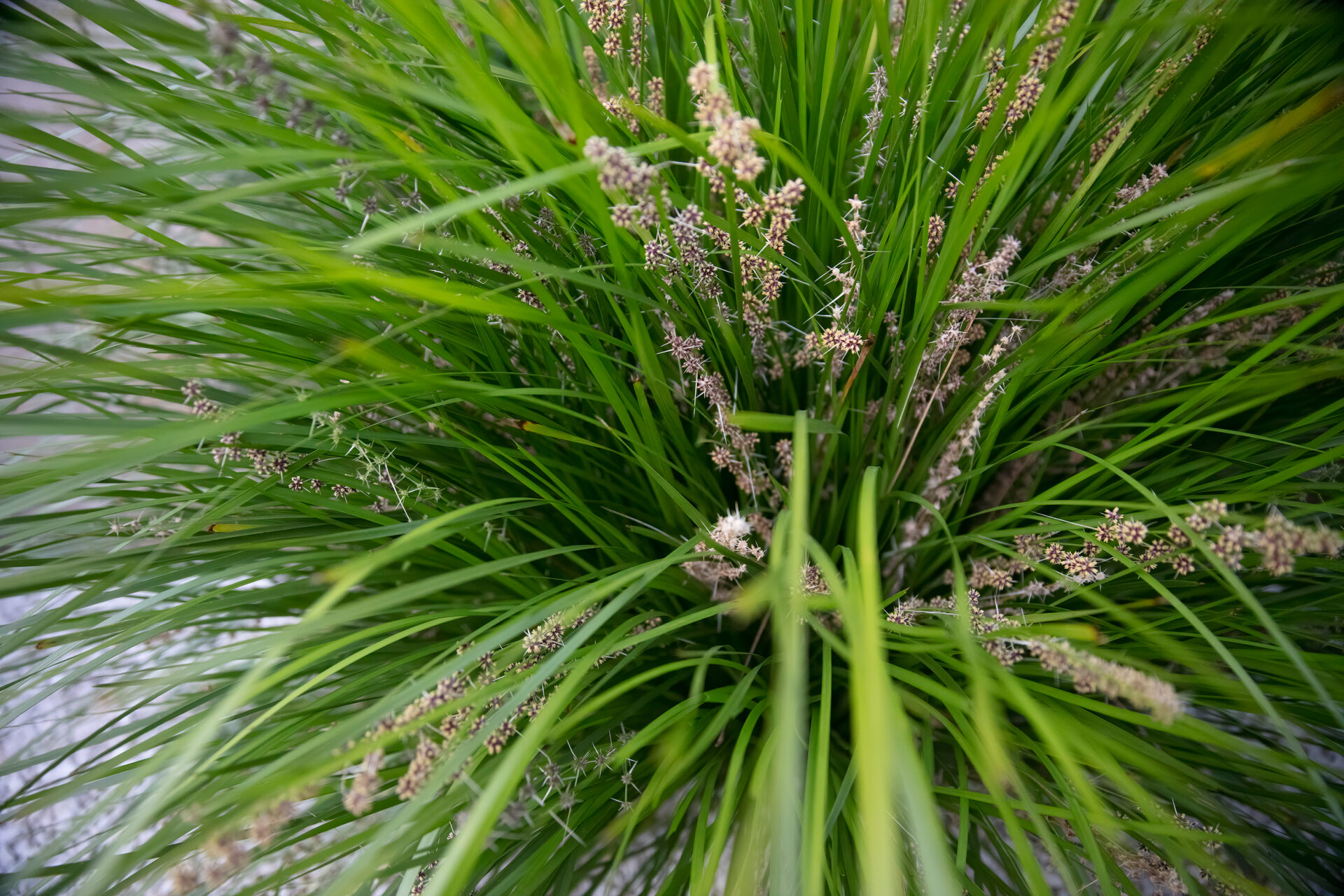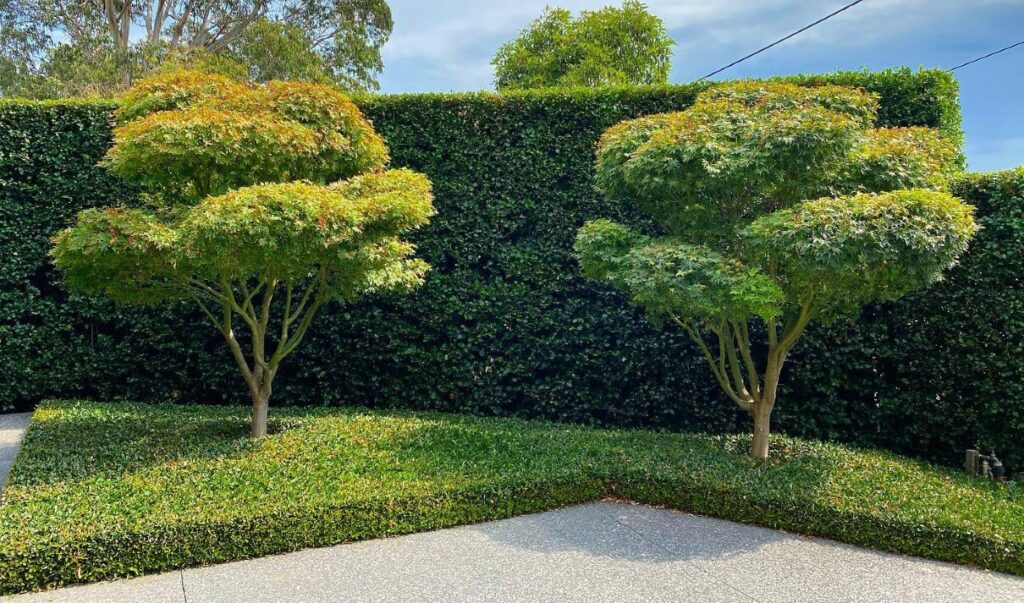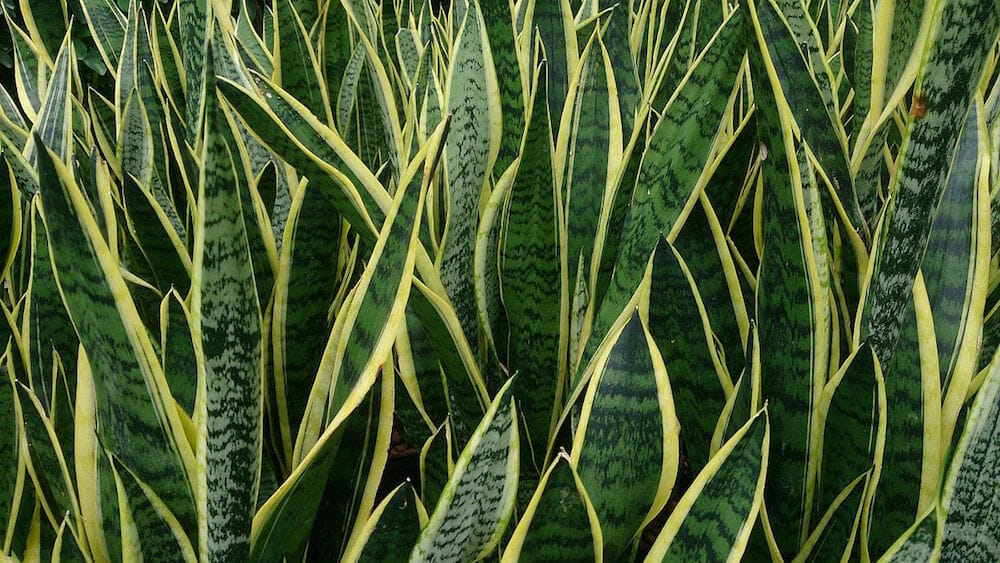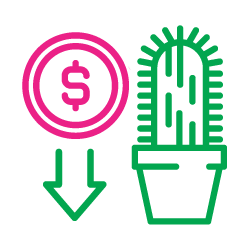No products in the cart.
A lovingly collected list of our most frequently asked questions about plants, planting advice, garden care, delivery and more.
Jump to FAQ category:
Choosing Plants (18)
There are many varieties of plants that will flower for most of the year, but nothing that flowers all year. It takes a bit of energy producing and maintaining flowers, plants need a break at some point! For long flowering plants check out our Top 10 Year Long Flowering Plants.
Our biggest request during Chris’ one-on-one Free Garden Designs is for a Low Maintenance Garden. We have made a list of the Top 10 Low Maintenance Plants which also includes some honourable mentions to help you choose.
We have a full list of trees available that only grow up to 4m. Check out our list here!
Many shrubs, groundcovers and climbers can be grown in pots but when it comes to trees it can be a little trickier. Trees have large root systems to feed and support the trunk and canopy of the tree. If the root system is confined to a pot it can either restrict its growth, not allowing the tree to grow any bigger than the root system or pot, or it can kill the tree. Pots have a limited amount of root and a plants roots can quickly fill the pot and become what we call rootbound. This is where the roots have no where to go and just grow round and round the outside of the pot, eventually strangling itself.
To grow a tree in a pot, choose a dwarf variety or maintain regular pruning of the branches of the tree. This can result in bonsaiing the tree. If you want a larger tree in a pot, you must choose a large pot. In some cases the pot will be as big as 2m wide or 1m tall! For more advice give us a call.
Pot size is the diameter of the top of the pot. We base the sizes of our plants off the pot size so we have a standard measurement to categorize the plants by. We’re a bit old fashioned, as we’ve been in the nursery business for 3 generations now, so we give our pot sizes in inches. So a 12″ Pot means a pot that has a 12 inch diameter at the top of the pot, or 30cm. In Australia, pot sizes are also measured in centimetres, which is also the diameter of the top of the pot, or litres, which is the volume.
As plants are living and grow, even whilst sitting on the shelf, we need to have a general size by which to group them by. Plants can vary in width and height in the same pot size depending on their age, the time of year and what supplier they were grown by. The pot size gives you a good idea of the maturity of the plant you are getting.
Here is a handy conversion chart:
| Pot Volume | Pot Size | |
|---|---|---|
| 5 Litre | 15 cm | 6″ |
| 7 Litre | 20 cm | 8″ |
| 10 Litre | 22 cm | 9″ |
| 15 Litre | 25 cm | 10″ |
| 20 Litre | 28 cm | 11″ |
| 25 Litre | 31 cm | 12″ |
| 30 Litre | 34 cm | 13″ |
| 40 Litre | 39 cm | 15″ |
| 50 Litre | 44 cm | 17″ |
| 70 Litre | 50 cm | 20″ |
| 85 Litre | 55 cm | 22″ |
| 100 Litre | 60 cm | 24″ |
| 110 Litre | 60 cm | 24″ |
| 130 Litre | 65 cm | 26″ |
| 150 Litre | 80 cm | 32″ |
| 170 Litre | 80 cm | 30″ |
| 230 Litre | 80 cm | 32″ |
Heights can vary from plant to plant and from supplier to supplier at different times of the year. We will list this where we can, but because we have over 10,000 products available online, this information rapidly goes out of date, so we don’t want to supply incorrect information. If you need the actual height of the current product it is best to contact the nursery and ask one of our friendly staff. Larger pot sizes are consistently more mature plants with more established root systems, so this is why we size and sell our plants this way.
You certainly can! We have a wide range of advanced trees which will give an instant garden effect. Depending on the size of the tree you may need assistance in planting or transporting the tree.
Established trees come in sizes of 16″ pot to 500 litre bags. Ask our friendly staff for further assistance.
We have an extensive range of hedging and screening suitable for all situations. Check out our Top 10 Screening Plants or browse our range of hedging and screening plants.
You certainly can! We have lots of options for tall narrow screening available in store and online. Browse our range of tall and narrow hedging and screening plants.
Bees are attracted to flowers that they can access for pollen. There are many plants that have flowers that only birds or specific insects can access. To avoid bees completely choose plants that don’t flower.
To find out what your council requirements are, visit your council website. To find your council website, click here for an interactive map.
This all depends on your council. Some councils are very strict on what can be planted in your garden, others are not as much. To find out what your council requirements are, visit your council website. To find your council website, click here for an interactive map.
Some plants don’t have invasive roots so they won’t be able to get into your pipes or pool, even if planted nearby. Other plants, such as those of the Ficus are very vigorous and will often hunt for water. Ficus roots have been known to get into cracked water pipes and old septic systems. It is best to check with your nursery or gardener if the plants your are planting will invade your pool or pipes.
Because we work with over 200 different growers and have over 10,000 plants on our website, this is not an easy question to answer. Some plants are only available at certain times of the year, some plants unexpectedly sell out due to popularity, crops sometimes fail, weird weather messes with the growing season, or the grower decides that a plant is not worth growing anymore, and sadly never grows it again. We work hard to keep the most popular plants in Melbourne in stock at all times, but we also sell a lot of unusual and rare plants to customers all over Australia, and these may only be available once every few years.
To solve this, we have a feature on our website where you can request to be notified when any item comes back into stock. Simply fill in your name and email on the product page of the item in the size or each of sizes you are interested in, where it says “Email me when available again”. Once it’s back in stock, you’ll be notified straight away.
If your desire for a certain plant is strong, try browsing for alternative sizes of that same plant that are available now. You can also Contact Us to request that we send out a search party and see if there is any place possible we might be able to find it for you. We can also use our plant knowledge to recommend alternatives.
Sometimes it seems like our nursery holds every plant imaginable, but the truth is we have over 10,000 products available on our website, and we cannot physically hold all of them at our Campbellfield nursery. If you see a product in stock online, it may be either at our store, at one of our farms or at a grower that we collect from on a very regular basis. We bring plants into the nursery from these other locations 6 days a week just to keep up with the demand and flow of plants through the store and fill customer orders.
This means that if you see something available online, is only guaranteed available for delivery or pick up once your order is processed or assembled. To avoid disappointment, please phone us before travelling to our nursery if there is a specific item you need. Better yet, buy it online, select the Pick Up option and we will let you know when it is ready to collect.
We are all about DIY gardens at Hello Hello Plants. We’ve helped thousands (actually—we counted) of customers from Melbourne & Victoria work out a design for their garden that they could implement themselves. To get a high-end looking, classy garden without bringing in a landscape architect (at a high-end, classy price), here are Chris’ top tips:
- Number one piece of advice is to choose plants that you know will work and will do well in the conditions you have in your garden, or that particular part of the garden. This means they will flourish and do really well. If it’s a shady spot, choose plants that love the shade. If it’s a hot, sunny spot, choose a hot sun lover.
- Select a combination of plants that are going to look good together and keep it simple. Don’t go for rare or expensive plants that will struggle and be hard to care for. We broke down the essence of Toorak gardens, some of the most fabulous in Melbourne, and you can find out what you can do to create the same sense of style here.
- Use mass planting. This is where many of the same type of plant are planted together in an area, with or without a pattern, to create a lush sense of impact. To do this on a budget, select inexpensive plants like Silver Birch trees that still look impressive, or sacrifice size and buy smaller (younger) plants.
We can provide assistance in working all of this out as part of our free Garden Design service.
If you have a spot in your garden that doesn’t get any direct sunlight shining on it at any time of day, you need to choose plants that tolerate what is called “full shade”. Here’s a few suggestions:
- Aucuba ‘Gold Dust” with beautiful speckled foliage
- Tractor Seat Plant featuring glossy round dinner plate sized leaves
- Japanese Aralia which is a lush, tropical looking shade lover
- New Zealand Rock Lily for a strappy looking option
- Ajuga ‘Burgundy Glow’, a colourful spreading plant that blocks weeds
- Baby’s Tears as a groundcover in a shady spot
Here’s a link to some more plants that tolerate full shade.

The ever popular Tanika, a “trademarked” variety of Aussie native Lomandra grass
Plant Breeders’ Rights (PBR) is a form of intellectual property protection granted to plant breeders for their new plant varieties. It gives breeders exclusive rights to produce, sell, and distribute their varieties for a specified period, usually around 20 years. In Australia, popular PBR varieties include Callistemon ‘Little John’, Agapanthus ‘Snowball’, Correa ‘Dusky Bells’ and Ozbreed’s Lomandra grasses including the ever popular Lomandra ‘Tanika’.
The pros of PBR include providing incentive to plant breeders to develop new and improved varieties, promoting innovation in the horticultural industry, and ensuring breeders can make their money back on investing in developing new plant variations. PBR encourages development of a diverse range of ‘fancy’ plant options for customers.
However, there are a few concerns to be aware of around PBR varieties, for gardeners and growers.
- Higher prices for new varieties: Breeders with PBR have the exclusive rights to sell and distribute their protected varieties, which can lead to higher prices for customers. Limited competition in the market can result in less affordable options for gardeners and farmers.
- Potential for monopolies: PBR can create monopolies in the seed and plant market, as breeders with protected varieties have a strong market advantage. This concentration of power may limit choices for consumers and reduce competition in the industry.
- Restriction on seed saving: PBR typically prohibits farmers and gardeners from saving and exchanging seeds of protected varieties for future planting. This limits the traditional practice of seed saving and can increase dependency on commercial seed sources.
What Does That Mean (13)
Pot size is the diameter of the top of the pot. We base the sizes of our plants off the pot size so we have a standard measurement to categorize the plants by. We’re a bit old fashioned, as we’ve been in the nursery business for 3 generations now, so we give our pot sizes in inches. So a 12″ Pot means a pot that has a 12 inch diameter at the top of the pot, or 30cm. In Australia, pot sizes are also measured in centimetres, which is also the diameter of the top of the pot, or litres, which is the volume.
As plants are living and grow, even whilst sitting on the shelf, we need to have a general size by which to group them by. Plants can vary in width and height in the same pot size depending on their age, the time of year and what supplier they were grown by. The pot size gives you a good idea of the maturity of the plant you are getting.
Here is a handy conversion chart:
| Pot Volume | Pot Size | |
|---|---|---|
| 5 Litre | 15 cm | 6″ |
| 7 Litre | 20 cm | 8″ |
| 10 Litre | 22 cm | 9″ |
| 15 Litre | 25 cm | 10″ |
| 20 Litre | 28 cm | 11″ |
| 25 Litre | 31 cm | 12″ |
| 30 Litre | 34 cm | 13″ |
| 40 Litre | 39 cm | 15″ |
| 50 Litre | 44 cm | 17″ |
| 70 Litre | 50 cm | 20″ |
| 85 Litre | 55 cm | 22″ |
| 100 Litre | 60 cm | 24″ |
| 110 Litre | 60 cm | 24″ |
| 130 Litre | 65 cm | 26″ |
| 150 Litre | 80 cm | 32″ |
| 170 Litre | 80 cm | 30″ |
| 230 Litre | 80 cm | 32″ |
Planting distance how far apart your plants should be spaced when you plant them. It is calculated by the maximum or mature width of the plant and the height it will be kept at. It also depends on what the plant will be used for, such as whether the plants need to be merged to create a hedge or border, or if they are to be planted as a feature sitting on their own. For example, a Pyrus ‘Capital’ Ornamental Pear can be used for avenues or as a tight screen. In an avenue, the trees would be planted with spaces in between each one. As a tight screen, they need to be planted close together with no gaps. If the tree grows to 3m wide, for an avenue it should be planted at a minimum 3.5m apart so there will be a gap of 50cm between each one, but for a screen it should be planted 2.5m apart so they merge together. For more information ask one of our friendly staff.
This means the plant is Economy Grade or less than perfect. We also call these Seconds. These plants may have broken branches, are too tall or overgrown in the pot or mildly affected by a pest so they have been discounted accordingly. We recommend only seasoned gardeners or those who are wanting to try a cheap risk purchase these plants as they require tender loving care to be restored to their former glory.
We supply such plants to reduce waste from the supplier as these plants would often be tossed into a burn pile or into green waste. These plants also give the opportunity to the customer who needs cheap plants but can’t necessarily afford full priced options.
These plants are plants supplied without a pot and soil around the roots. They are mostly deciduous plants, with a few exceptions such as Buxus ‘English Box’, that are dormant during the winter time and can survive transportation without soil around their roots. Bare rooted plants are also known as field dug.
Plants are supplied bare rooted as they are cheaper to handle, cheaper to store, cheaper to transport and so we can then sell them cheaper to the customer. Bare root roses, for example, are often half the price of potted roses. You can learn more about planting bare rooted plants in this fact sheet.
Bare root season is only during winter and lasts from approximately June until September.
Evergreen means the plant will have foliage all year, including winter. It is going to be ever…green!
Deciduous means the plant will lose its leaves in the autumn. It will have bare branches during the winter where it is dormant, sprouting new growth in the spring.
An ornamental tree is one that is grown for its attractive looks! It usually means it is smaller than its wild relatives, deciduous and changes with the seasons, and doesn’t always produce noticeable/edible fruit where other members of the same family would. They are perfect as a feature tree and generally suit smaller gardens.
Examples include Ornamental Pear Trees and Flowering Cherry & Plum Trees. These don’t produce edible fruit, but put their energy into looking stunning throughout the seasons, with very attractive overall shape, foliage and blossoms.
A Standard is a plant that has either been grafted or trimmed to look like a lollipop! A bare, straight trunk with foliage on top that is often trimmed in a rounded shape. Standards come in trees, shrubs and roses from Standard Weeping Cherries to Standard Roses. We sell lots of different types of standard shaped plants.
The reason plants are made into standards is to control the overall size of the plant, to create a neat feature plant out of an otherwise unruly plant, or to create the opportunity to underplant. For example a row of Standard ‘Iceberg’ roses can be underplanted with a low growing cottage shrub or groundcover. This means a nice full look and getting more plants into an area than you would otherwise be able to plant there.
A standard that has been grafted is created using a long, straight piece to create a trunk, with one or more pieces attached to the top to create a bushy head. When this is done, it means that the trunk doesn’t grow taller than the original height, just thicker and more mature. Only the bushy head section grows taller and fuller, and is easily trimmed to keep it to a desired size. This ensures that the plant will never grow to a huge size that is one day too big for the original spot.
Grafting is a horticultural technique where a piece of a plant such as a bud or branch is almost surgically attached to another compatible plant. Growers do this for a number of reasons:
– To control the size of the attached plant
– To improve the strength of the attached plant. Some plants have a weak root system but when attached to another with a very vigorous root system, it can mean a strong healthy and good looking overall plant that would otherwise perish!
– To grow more than one variety on the same plant, a space saving technique!
 Pleaching means to remove all the branches from a certain height down, usually on a hedge, baring the trunk of the plants. We do this to neaten the foliage, create airflow and to make room for underplanting. It creates a wonderfully classic look, basically an elevated hedge on clear, strong trunks.
Pleaching means to remove all the branches from a certain height down, usually on a hedge, baring the trunk of the plants. We do this to neaten the foliage, create airflow and to make room for underplanting. It creates a wonderfully classic look, basically an elevated hedge on clear, strong trunks.
Pleaching works especially well with certain plants. Check out our article on the Top 10 Best Plants for Pleaching.
This is a horticultural technique of training a plant flat on a horizontal plane, for example against a wall or fence. It is often used for fruit trees or to grow a tree in a tight area. In terms of fruit trees it increases airflow and access to the fruit, making management a lot easier than growing as a regular shaped tree. Espalier is also used in courtyards or on walls, where space is a premium or to cover a wall.
You can train a number of plants to do this given the right equipment and patience. We also sell a range of espaliered plants already trained into shape and ready to go.


Andrew Stark Landscape design with cloud pruned Japanese Maple
Cloud pruning is a unique and artistic technique used to shape plants into soft, billowy cloud-like forms. It originated in Japan and has gained popularity worldwide. This technique involves selectively pruning and training branches to create a sculptural effect, mimicking the appearance of fluffy clouds. Cloud pruning is commonly used on shrubs and trees, including Box hedging plants like English Box, Japanese maples, Myrtus luma and pines. These plants, when skilfully pruned, can add a touch of elegance and serenity to any garden.

The ever popular Tanika, a “trademarked” variety of Aussie native Lomandra grass
Plant Breeders’ Rights (PBR) is a form of intellectual property protection granted to plant breeders for their new plant varieties. It gives breeders exclusive rights to produce, sell, and distribute their varieties for a specified period, usually around 20 years. In Australia, popular PBR varieties include Callistemon ‘Little John’, Agapanthus ‘Snowball’, Correa ‘Dusky Bells’ and Ozbreed’s Lomandra grasses including the ever popular Lomandra ‘Tanika’.
The pros of PBR include providing incentive to plant breeders to develop new and improved varieties, promoting innovation in the horticultural industry, and ensuring breeders can make their money back on investing in developing new plant variations. PBR encourages development of a diverse range of ‘fancy’ plant options for customers.
However, there are a few concerns to be aware of around PBR varieties, for gardeners and growers.
- Higher prices for new varieties: Breeders with PBR have the exclusive rights to sell and distribute their protected varieties, which can lead to higher prices for customers. Limited competition in the market can result in less affordable options for gardeners and farmers.
- Potential for monopolies: PBR can create monopolies in the seed and plant market, as breeders with protected varieties have a strong market advantage. This concentration of power may limit choices for consumers and reduce competition in the industry.
- Restriction on seed saving: PBR typically prohibits farmers and gardeners from saving and exchanging seeds of protected varieties for future planting. This limits the traditional practice of seed saving and can increase dependency on commercial seed sources.

The term “variegated” refers to the presence of different colours or shades on a plant’s leaves. This variation can show up as patches, stripes, speckles, or marbling of different colours, often including combinations of green, white, yellow, cream, or pink.
The variegation in plants is a result of genetic mutations or natural variations in pigmentation. When a variety is “variegated”, these interesting colours may have shown up as a happy accident in a normal coloured plant, and were then bred by gardeners or horticulturalists into their own specific variety. Variegated plants can be found across different species and plant families, ranging from ornamental foliage plants to flowering shrubs and trees. The distinct colour patterns make them eye-catching additions to gardens, providing visual interest and creating a focal point.
Gardeners appreciate variegated plants for their ability to brighten up shady areas, add texture to plant arrangements, and create stunning contrasts when paired with solid-coloured foliage. Whether used as standalone specimens or combined with other plants, variegated varieties bring a touch of charm and uniqueness to gardens, offering a delightful and colourful twist to traditional greenery.
Planting & Care Advice (17)
Different plants require different soil types. Generally speaking, most plants are happy to grow in a well drained, slightly moist soil. However it is best to check the specific needs of the individual plant. For more advice, check out our What’s my soil types page or ask one of our knowledgeable staff. Give us a call, shoot us an email or come speak to us in store!
This depends on a few factors like what type of plants you are purchasing or want to purchase, what soil type you have and if you’re able or are happy to hand water or not. Watering systems regulate your gardens watering requirements, making it easier to maintain the right level of moisture in your soil for your plants. You can have your whole garden or only parts of your garden set up to be watered whilst you are asleep or away on holiday, reducing the amount of manual labour you need to commit to the garden. Modern systems can monitor the amount of water you use and even reduce the amount you would ordinarily use if you hand watered. They can even be accessed and operated via mobile apps. So you can turn on your irrigation system in Melbourne while you’re away in Bali!
This is most commonly a sign that your tree is a deciduous tree! Deciduous trees lose their leaves in autumn, often turning reds, purples, oranges and yellows. Some varieties will turn a brownish colour, but all will sprout new growth in the spring. If your plant has leaves changing colour in later winter, spring or summer, this could be a sign of a nutrient deficiency, water logging or water stress. In this case talk to your local nursery or get in contact with us for advice.
This could be a sign that your plant is deciduous, meaning it naturally loses its leaves in winter, or a sign of stress. Leaves on a plant change to brown or yellow as a sign of heat or water stress, or to indicate a nutrient deficiency or pest issue. Check out our deficiencies page here.
Firstly we need to identify what type of bug or insect is on your plant. Some insects are beneficial and are there to eat the bad bugs that are damaging your plant. Otherwise other insects can do considerable damage to your plant if not dealt with. There are many pesticides and pest treatments to remove and prevent insects damaging your plants. Check out our Plant Pests, Diseases & Deficiencies page here or ask one of our friendly staff in store or over the phone.
Fertilizing or “feeding” your plants depends on the time of year, size of your plant and the variety of plant you have. In general plants don’t need fertilizing in winter as they are mostly dormant or not growing much. However in some climates some plants may still need a feed. Check your plants requirements under the “Attributes” section on our online store, on the label of the plant or you can ask our knowledgeable staff by giving us a call or visiting us in store.
Correctly identify your plant before you prune. Some plants benefit from a really hard prune whereas others could quickly perish from the stress. Check out our Pruning advice page here.
Check out Chris’ step-by-step video on how to plant a tree.
Here’s a step by step guide to planting your new plants in your garden. You’ll need:
- A shovel or spade
- Some good quality organic soil or potting mix
- Soil wetter such as SaturAid
- Slow release fertiliser such as Osmocote
- Mulch, either store bought or home made
- Plants!
Before you go ahead, we suggest you also check out our tips on preparing your garden bed for new plants.
- Dig a hole that’s twice as wide and deep as the size of the pot the plant is in.
- If the area has bad drainage, is boggy, has clay or is heavily compacted, sprinkle some soil wetter into the bottom of the hole. This allows water to drain freely away from the base of the plant and prevents the roots from rotting or drowning.
- Mix the soil you dug out of the hole 50/50 (half-half) with some more good quality organic soil or potting mix, to give your new green buddy a cozy home.
- Back fill the hole with this magic mix so that it’s a little more than half full, enough so that the plant is going to be sitting with the top of its original soil slightly raised above ground level when you place it in the hole.
- Sprinkle a little Osmocote in the bottom for a nutrient boost, and pop in the plant. Osmocote is specially formulated not to burn the roots of the plant.
- Fill in the sides of the hole with your magic soil mix and mound it up slightly to the trunk/stem of the plant without covering it.
- Sprinkle a little more Osmocote on top near the roots, and gently pat the soil.
- Then remember to mulch around the plant leaving breathing room of about 1-2 inches around the base/main trunk of the plant to avoid rotting.
- Oh, and soil wetter is like a secret weapon for better water penetration and drainage—trust us on this one. Spread some more around the whole garden bed straight after planting as directed.
Weeping Cherries and Weeping Maples are quite sensitive to wet feet and seeing as Melbourne is prone to having hard clay soils it is best to plant these trees in freshly mounded soil above soil level. Planted in this way allows good drainage around the roots and removes the risk of wet feet.
Chris also likes to sprinkle some soil wetter into the bottom of the hole dug for planting the tree, before you plant it. This will help the water pass down into the soil below and drain away freely.
Sometimes you don’t have the opportunity or time to plant your plants as soon as you get them home so they will need to be looked after until they are planted. Check out our Nursery to Garden advice page here.
This all depends on the type of plant. Some varieties can be planted any time of year, others benefit greatly from being planted at certain times. In general, early spring and autumn are favourite times to plant as the weather is mild with no harsh cold or hot days and the soil is moist and warm.
You certainly can! Summer can be a great time to plant as the days are long and warm, which plants love. The possible downside can seem to be that it is so hot the plants wilt or even die. It’s important to understand that plants are not doing this because of heat, they are doing this because they are drying out. If you think of the tropical jungles of our planet, they are in the hottest parts of the world. Because there is plenty of water, plants absolutely thrive in this heat.
To avoid plants wilting or drying, there are many things you can do. Maintain a watering schedule so your plants have ample water to survive the hot days. If you don’t have time, consider installing an irrigation system. Mulch your gardens to reduce the amount of moisture evaporation out of the soil, which helps save on water costs. Prepare your soil before planting, making sure it is rich in organic matter that helps retain moisture. If it’s hard clay or deficient of organic matter, water may not even penetrate the soil to get to the roots. If you’re unsure, check out our What’s My Soil Type advice page here.
The nature strip is the piece of land between the footpath and the road, or between your house and the road. Most of the time you don’t actually own this piece of land and it belongs to the local council.
This means you need to consult your local council’s rules first. You can’t usually touch the street trees, you may need a permit, or have to stick to a limited range of permitted plants. However there is a growing trend and acceptance of nature-strip planting from councils across Melbourne, allowing the possibility of replacing boring old grass with something the whole neighbourhood can admire and enjoy.
An easement is the right of another, often council workers, to access a section of your land when required for maintenance, repairs or access to another property. This can be in the form of a shared driveway or a section of lawn under powerlines. In most cases you can’t plant on an easement as, if access is required and the plants are in the way the plants will be removed, sometimes at the cost of the person who planted them. It is best to keep an easement clear for access purposes.
For more information on easements and responsibility of plants and gardens by landowners, check out Melbourne Water’s advice page here.
To thrive, plants depend heavily on the soil you plant them in. Many people are not sure about the quality of their existing garden soil and what they should do about it. When deciding whether to alter soil in your garden beds or replace it all together, here’s our advice:
Garden soil that you can buy in bulk is very often not as good as the soil that you’ve got. Your soil is usually millions of years old, and it’s better than a lot of what you can buy. In recent years we uncovered that some of the people who make and supply bulk garden soil in Melbourne are using very low quality components. It is essentially garbage, made of raw chicken manure and road sweepings and various bits of rubbish that’s only a few weeks old and has not been decomposed down ready to be planted in. It can burn the roots of your plants and kill them (see video demonstrating this). It can also drastically reduce in volume once the natural process of decomposing is complete. We’ve seen people fill large planters and garden beds with this badly processed soil, and a year later the soil has halved in volume because it just rotted away.
Our preference is to use a high quality potting mix and mix it 50 50, half half, with the soil you’ve got. Your existing soil has got minerals and all sorts of good stuff in it. Generally around Melbourne, our soils are heavy in clay. By mixing a high quality potting mix through it, or some compost, you can improve the soil and actually make it better than anything that you could buy.
If you’re uncertain about whether the soil you have is going to be adequate to support your new plants, you can use our free Garden Design Service. As part of this we recommend you bring a cup of your existing soil to your appointment, so that Chris can see if it needs to be adjusted.
For more info on how to test your own garden soil and understand what you have, check out our page: What’s my soil type?
How to best care for your plants so they grow up bushy and beautiful is a very general question. In a recent talk to young gardeners at a local primary school, Chris shared the most important lesson he’d ever learned when it comes to plants: Plants want to survive. The trick is to understand what they need and give it to them.
Here are Chris’ hot tips for care and maintenance of plants made simple:
According to a study conducted by the University of California about 30 years ago, if you want to ensure the survival of your plants, there are three key factors to keep in mind. These can be summed up as water, weed and fertilise.
The most important of these ingredients to plant health might surprise you…
- It’s weed control. Surprisingly, weed competition can severely slow the growth of plants, so it’s very important to keep the surrounding area free from grass and weeds. This allows your plants to receive the necessary resources like light and water without being overshadowed or overwhelmed. This starts with creating a weed free area to plant your plants into, and keeping it weed free especially while they are establishing themselves.
- After weed control, the next most important factor is watering. This is better called “the right amount of water”. Regular watering is important especially in warmer weather and while plants are establishing themselves. However, be cautious not to overwater, as this can lead to root rot and other issues.
Some people kill their plants very quickly with enthusiasm, watering them faster than the water can drain away, and actually drowning their roots.Using soil wetter is a good way to get the right watering balance. It help water penetrate the soil so that it gets down to the roots, as well as allows it to drain away freely and doesn’t pool and drown your plants!
- Lastly, fertilizing is another important aspect of plant care, although it ranks third in priority. Applying suitable fertilizers can provide the necessary nutrients for healthy plant growth.
If you’ve got a raw block, or an overgrown or neglected garden bed, your new plants will have a much better chance of surviving if you do some preparation before planting. In fact, this preparation can make all the difference in having healthy, fast growing and flourishing plants.
- Begin by spraying the area with Roundup* to zap the weeds, and allow it to sit for 48 hours.
- Mow the grass and weeds down as low as possible, down to the dirt.
- Next, dig, dig, dig! Dig, turn, and break up the soil with a spade or mattock, ensuring you go down to a depth of one whole spade.
- Mix in to a depth of 5-10cm some organic soil goodness (watch out for dodgy toxic soil sellers) or good quality potting mix and dig this all in again.
- Use a garden fork to roughly go over the area and rake out the junk, weeds, rocks etc.
- And finally, level the area with a steel garden rake to create a smooth canvas for your green masterpiece.
Check out Chris’ quick video on planting into raw soil on a freshly built block:
*Hold up: Roundup? Controversy alert.
When it comes to battling weeds, there’s one product that often sparks lively debates: Roundup. Now, Roundup has its fair share of controversies, but let’s explore its benefits. You see, Roundup is a herbicide (plant-killer) and contains an active ingredient called Glyphosate, which is like a weed-wrecking ninja. It swiftly eliminates weeds by attacking their roots, ensuring a thorough takedown.
Glyphosate gets neutralized by the calcium naturally present in the soil within a mere 48 hours, rendering it relatively harmless. Of course, safety first! It’s crucial to use proper protection when handling any chemicals. And remember: Roundup does NOT discriminate. It will kill any plant it touches, so don’t get it near your leafy beloveds.
If Roundup is not your style, fear not! An alternative approach involves some good ol’ manual labour. Grab your trusty mattock or shovel and hack and smash those weeds and grassy messes into the soil. Then, armed with a garden fork, diligently rake out the weeds, including their sneaky roots, and repeat every week or so in the leadup to planting time. It’s an eco-friendly way to keep your garden weed-free without the need for herbicides.
Services (7)
We do not provide trade accounts, but we do provide discounts where applicable for trade customers, especially on bulk orders.
Some of our bulk discounts are made available online and you can view these on our Bulk Buys page.
We specialize in planting lists and quotes. You can either email your planting list to us or bring it into the store to discuss it with our friendly and knowledgeable staff. Depending on planting requirements, we can also provide more cost effective substitutes to bring the price of the overall quote down, if required.
We certainly can! We specialize in providing competitive quotes for planting lists and even providing more economical alternatives. Using our Garden Design Service is one of the best ways to arrange this.
This all depends on your council. Some councils are very strict on what can be planted in your garden, others are not as much. To find out what your council requirements are, visit your council website. To find your council website, click here for an interactive map.
You get a set amount of one-on-one time with Chris to discuss everything you need for your garden project. You will come away with a plan for planting your garden design and a plant list. A detailed description of the service is given on our Garden Design Page.
Chris does not go to your property to complete a garden design. Due to the high demand for his garden designs, he does not have the time to go on location. But if you cannot come to our Campbellfield nursery to meet with him, he can do your garden design via video call.
You will be given a quick sketch of your design if requested, but not a full professionally designed plan that you would get from an expensive landscape design company. These plans are very time consuming and expensive to create and thus attract a higher price.
Delivery (9)
Our free delivery offers can change from time to time, but our current offer is:
- Spend over $300 and get free door-to-door delivery to metro Melbourne and certain regional Victorian centres (including Geelong, Bendigo, Ballarat, Shepparton and Traralgon)
Click here to see the full information and exact list of postcodes covered in the offer.
Delivering live plants is quite a specialised process. For this reason we maintain our own delivery fleet and staff, and this allows us to provide a vast door-to-door delivery network across most of Victoria. We also deliver to NSW, ACT, SA and QLD via outside freight companies and AusPost Express.
We do not deliver to NT, WA and Tasmania nor do we deliver internationally, due to plant quarantine restrictions.
For more on our delivery network, visit our delivery page here. For specific info on our regional Victoria delivery routes visit this page.
We can, but only to NSW, ACT, SA and QLD. We do not deliver to NT, WA or Tasmania.
Interstate delivery of plants is either via:
- AusPost Express, for small items. All items in 4″ pots or less can be ordered online and delivered via Australia Post. As long as your cart has only 4″ pots or smaller in it, you will see an option to have them posted, and the cost, once you enter your postcode at checkout.
- AusPost Express, for SOME medium size items. We CAN post some 6″, 7″ and 8″ pots via Australia Post, but it’s best to Contact Us to check if the plant you are interested in is postable. We will give you a custom quote to pay over the phone or by bank transfer if it is.
- Freight. We use specialty freighters to send larger plants or bulk orders interstate. As the freight cost starts at $200 and goes up from there, it’s usually only economical if you have a larger order. However, sometimes your dream plants are just not available in your state. Contact Us to get a quote for freight to your location.
Due to quarantine regulations and the safety of the plants we do not deliver internationally.
We post 2″, 3″ and 4″ pots via AusPost. We pack them securely in store so they have the best chance of survival in the post. Once picked up by AusPost we are given a tracking number that we pass on to you so you can track your parcel. We cannot guarantee your parcel’s safe arrival once it has left the nursery as it now in the hands of AusPost. For all tracking and lost parcel inquiries, contact AusPost with your tracking number.
We CAN post some 6″, 7″ and 8″ pots via Australia Post, but it’s best to Contact Us to check if the plant you are interested in is postable, and get a custom quote.
Once the freight company or AusPost has picked up the parcel, we hold no guarantee of your pallet or parcels safe arrival as it is now in possession of another company. If the plants were damaged due to a packaging issue, please contact our Orders & Dispatch team by calling us on (03) 9359 3331, Press 2 and we will be able to sort out a solution. For tracking and damaged pallets and packages in transit, the delivery company will need to be contacted.
Due to our high volume of orders and our vast delivery network, we can’t always book specific times and dates for deliveries. In many cases we can deliver during a time frame on a specific date providing we are given a minimum of one weeks notice, that all stock is in store at the nursery and does not have to be brought in from our farm or suppliers, and you are within our delivery area. A specific time cannot be given due to potential unforeseen traffic conditions.
If you haven’t made an order yet, it’s best to do so well in advance if you have a specific day or deadline that you need your plants by. Then, to arrange this, contact our Sales staff on (03) 9359 3331 and Press Option 1.
To discuss delivery for an existing order, give our Orders & Dispatch team a call and press Option 2.
The arrival of your delivery depends on your location. For all orders delivered by our Hello Hello Fleet, you will receive a text message on the day of your delivery stating an estimated time of arrival. You will get a text message tracking your order and giving you the option to contact the driver if needed. For estimated delivery days, contact our Orders & Dispatch team by emailing [email protected] or calling us on (03) 9359 3331, Press 2.
For interstate and AusPost deliveries, it can take up to 3 weeks from the date of order.
For orders delivered by our Hello Hello Fleet you will receive a text message on the day of your delivery stating an estimated time of arrival. You will get a text message tracking your order and giving you the option to contact the driver if needed. For AusPost orders you will be given a parcel tracking number.
My Order (3)
You certainly can, but don’t wait to let us know. If you need to make changes to an existing or newly made order, contact our Orders department as soon as possible to avoid disappointment.
Yes you can. Your receipt will be automatically emailed to you when you make a purchase online. If you made a purchase instore and you have not received it, contact our Orders department. Check your spam before contacting us, as sometimes our emails end up in there.
Your receipt is your tax invoice.
Yes you can. In store and phone purchases can be issued under a company name. If your order is made online, make sure you put your company name in at the checkout before completing your purchase, as we cannot change the issued name afterwards.
Refunds & Exchanges (4)
Our plants do not come with a warranty as they are living objects and their treatment affects their progress and health.
You certainly can, provided they are in the same condition they were delivered or purchased in. Do not plant them! Keep them watered and protected until they are returned or picked up.
We do not return plants that have been planted as they are no longer in the same condition they were delivered or purchased in, and can not be resold due to their treatment during planting.










